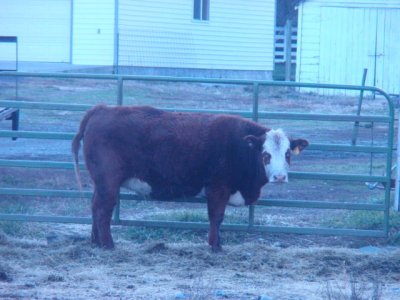Yes, 800-900 would be a reasonable expectation if you got a weaned Corr steer and fed him til he was 2. I don't know where to find % yield for one like that. I think most people who have eaten a Corr is because it was aged out or if younger, was injured. I don't know anyone who takes weanlings and feeds them out for slaughter. I would say probably about the same yeild you get from jersey steers. I will have some born in October, and I am thinking about keeping 2 and trying them out just to see. We'd normally wean these in April, but I'd leave them where they are til about 1st of November (on Kudzu which tests 24-26% protein) then put them up and feed them out til they are 800 lbs.
Each year, we have had 2-4 cows that got missed when we had the black bulls in, and they got bred by our Corr clean=up bull. One year we had 10 out of the 120, and last year we hade zero. We normally keep any Corr heifers and sell the steers at weaning to team ropers for $200. If we weren't 3000 miles apart I'd send you a couple. But, like I was saying, put $50-$100 with that $200, and buy a heavy -bred Corr cow for $250-$300. If it was bred to a Corr bull, then you'd have a Corr calf to wean and feed out. If she was bred to a beef bull, then you'd have an even better one to feed out. Then breed her to your Angus bull every year.
You have been attacked by 6 of the group known as the Hateful Eight on here. That is what they do... browse the threads for comments that they can respond to with smart-ass, sarcastic rhetoric. No one pays them any attention. What little bit of knowledge a couple of them do have, is negated by their hateful comments and personal attacks.
I found some articles about Corriente for beef, but none I have read so far says anything about the yield. I will keep looking.

